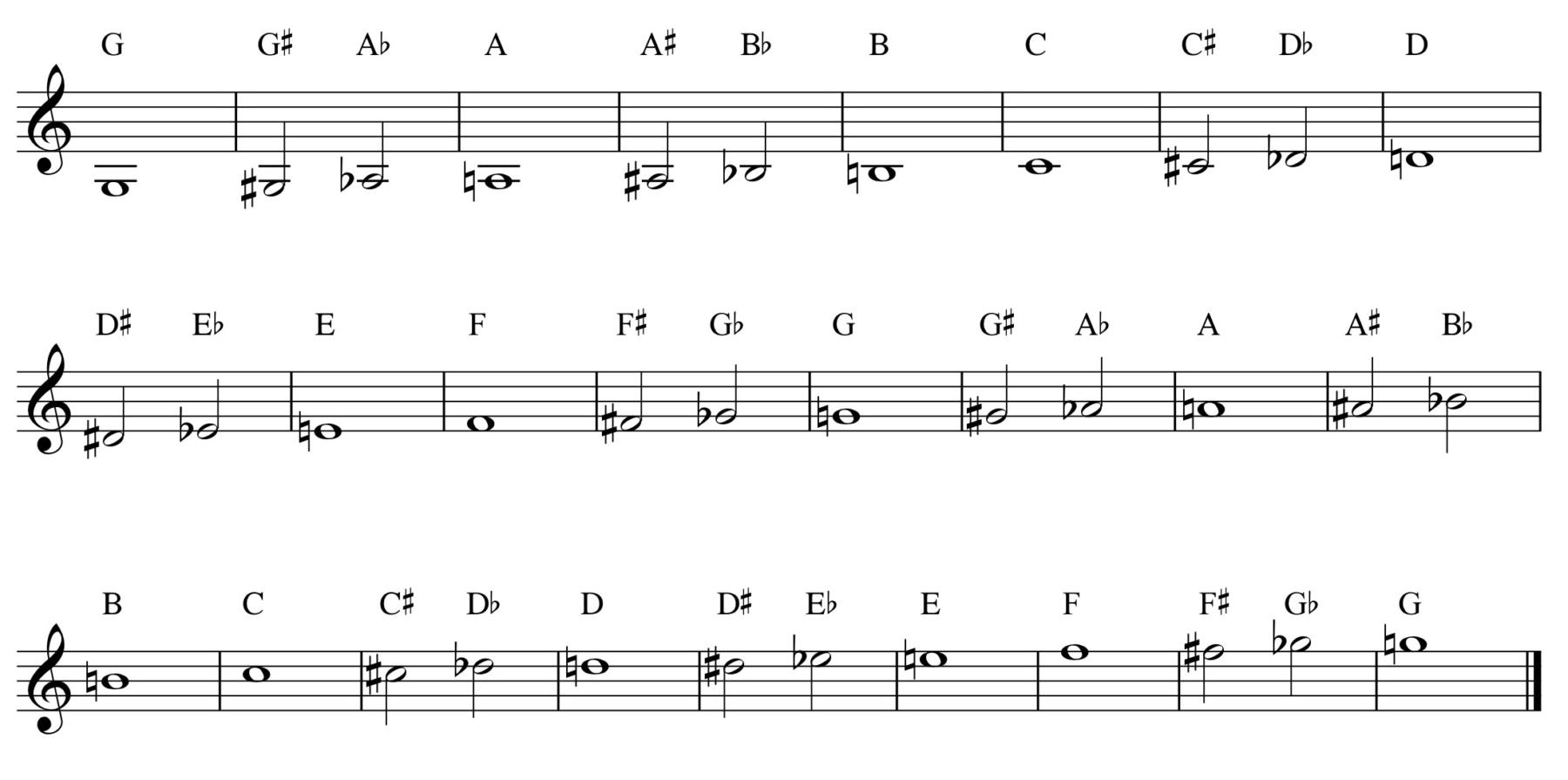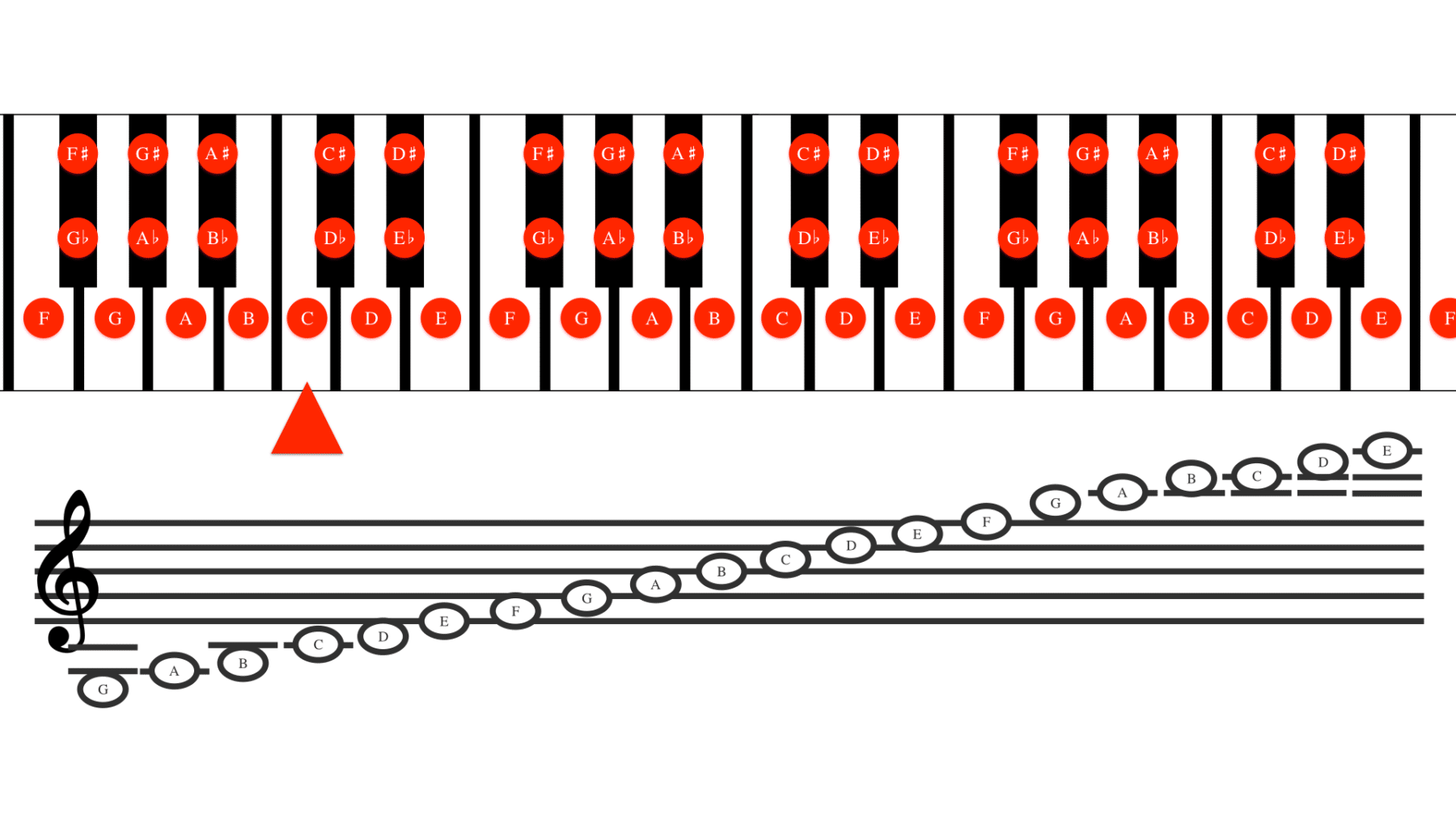It’s never too late to start learning to read music notation; it’s that handy! Learning to read melodies is easy in theory, but just like with chord symbols, it takes practice to become a quick reader.
However, to read melodies just to be able to check whether you’re singing the right note, to check your pitch, or to find variations is quite easy.
It’s the rhythmical part of reading that’s tricky and takes a lot of practice. Luckily, the sing-along exercises of Songbird provide excellent practice material with music notation and audio examples with a metronome.
Music staff
The vertical axis of a music staff* indicates the height of a note; the higher on the staff, the higher the note in frequency, thus pitch (the height of the tone we perceive).
* those 5 horizontal lines
Shown in the image below are the most common notes for jazz singers.

Clef
The elaborately drawn symbol on the left is called a clef, and this type indicates the note g above the so-called central c as the note on the second line from the bottom. Notes above or below the staff get additional lines to make their vertical position clearer thus making them easier to read.
Same tone, different perspective
Some bars in this example have two notes, like bar 2. It contains G# and Ab. This are the same tone (same frequency, same perceived height) from a different perspective. A ‘G’ raised by a semitone becomes G#. An ‘A’ lowered by a semitone becomes Ab. On an piano, G# and Ab are the same key.
Undo
The symbol before the note in bar 3 for example, means any alteration by accidentals is undone and the accidentals of the key (in this example there are none, indicating the key of C major or A minor) rule!
Note names
This picture shows where you can find the notes on a keyboard. The triangle indicates the central c.

The duration of notes
The horizontal axis indicates the position of the note in time from left to right.
Open note = a whole note = 4 quarter notes
Open note + stick = a half note = 2 quarter notes
Note + stick = a quarter note = 2 eighth notes
Note + stick + flag = an eighth note = two sixteenth notes
Note + stick + 2 flags = a sixteenth note
A dot behind any kind of note means one and a halve times the duration of that kind of note!
A 3 above or below three notes, often with brackets, means a ‘triplet’: three triplet notes of a kind fit into the duration of two normal notes of that kind.
Rests
There are rests (pauses) as well, of the same durations as the notes.

Rhythm tree
This is a video of a rhythm tree. You’ll be able to see and hear the duration of the different kinds of notes. And since this concludes this theory guide, why not go out with a bang? Clap along with this rhythm tree!

